
Planetary Picture of the Day
Week of July 31, 2023
A cosmic question mark, a transiting Phobos, and an iridescent cloud.
Monday, July 31, 2023
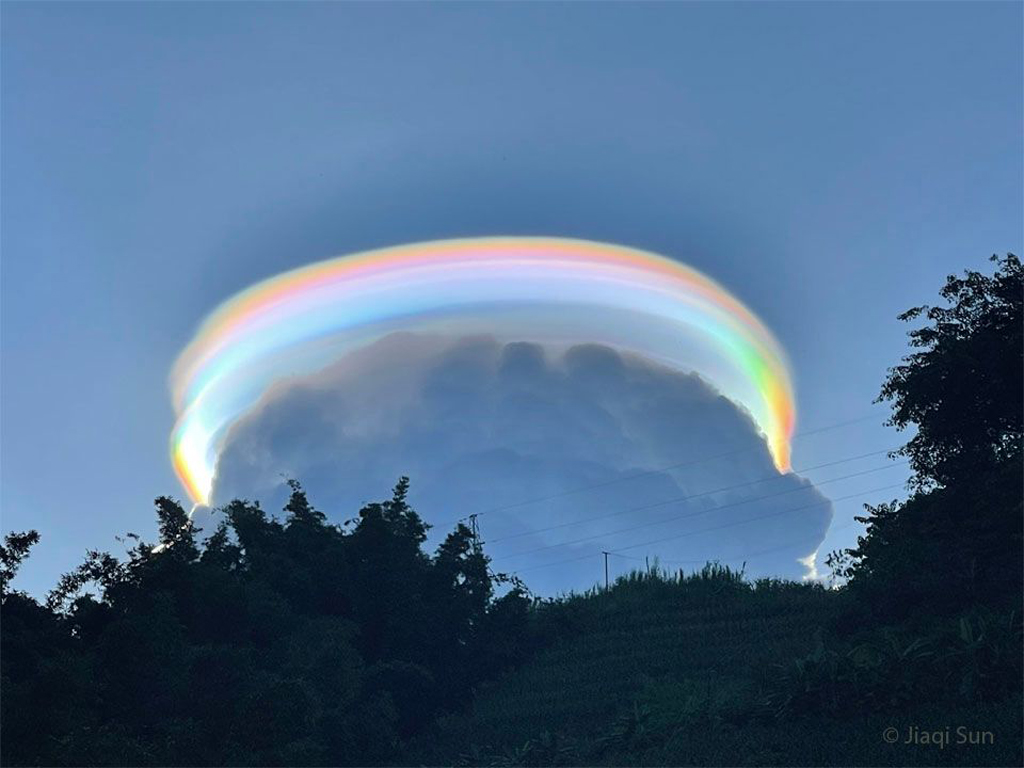
An Iridescent Pileus Cloud
Pictured, behind this darker cloud, is a pileus iridescent cloud, a group of water droplets that have a uniformly similar size and so together diffract different colors of sunlight by different amounts. The image was taken in August 2022 in Pu'er, Yunnan Province, China. Also captured were unusual cloud ripples above the pileus cloud. The formation of a rare pileus cloud capping a common cumulus cloud is an indication that the lower cloud is expanding upward and might well develop into a storm.
Tuesday, August 1, 2023
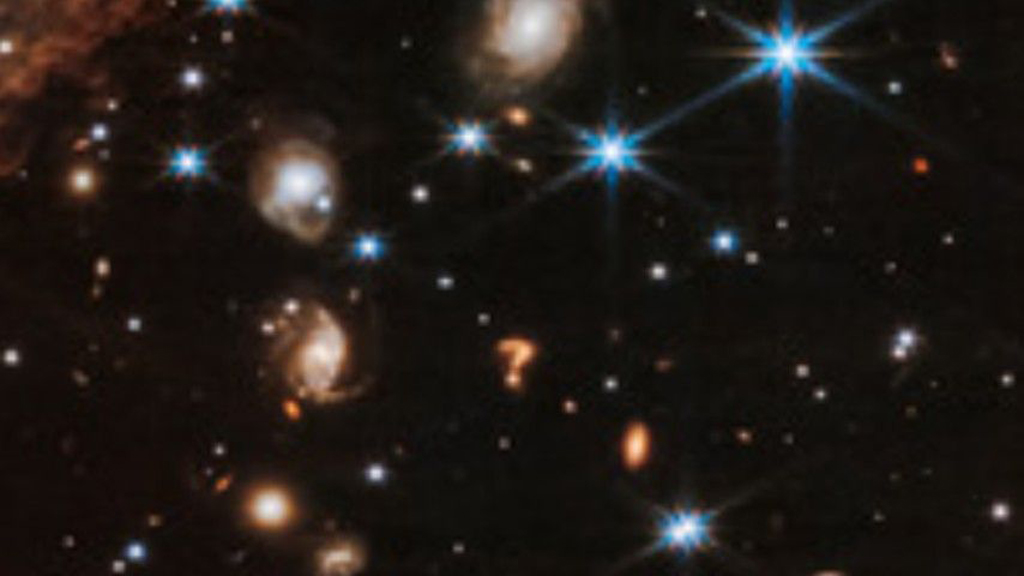
Caption: via the Space Academy
The SETI Institute has friends in high places!
The JWST discovers a cosmic question mark mirroring the SETI Institute logo while snapping highly detailed infrared images of actively forming stars.
Recently, the telescope captured an image of two actively forming young stars, named Herbig-Haro 46/47, located 1,470 light-years from Earth in the Vela Constellation. However, the most intriguing part of the image is a distant object resembling a giant cosmic question mark. The question mark-shaped object is believed to be a distant galaxy or potentially interacting galaxies. The object's red color in the JWST image indicates that it is quite distant. This might be the first time astronomers have seen this cosmic question mark, and additional follow-up would be required to determine its nature with any certainty.
Wednesday, August 2, 2023
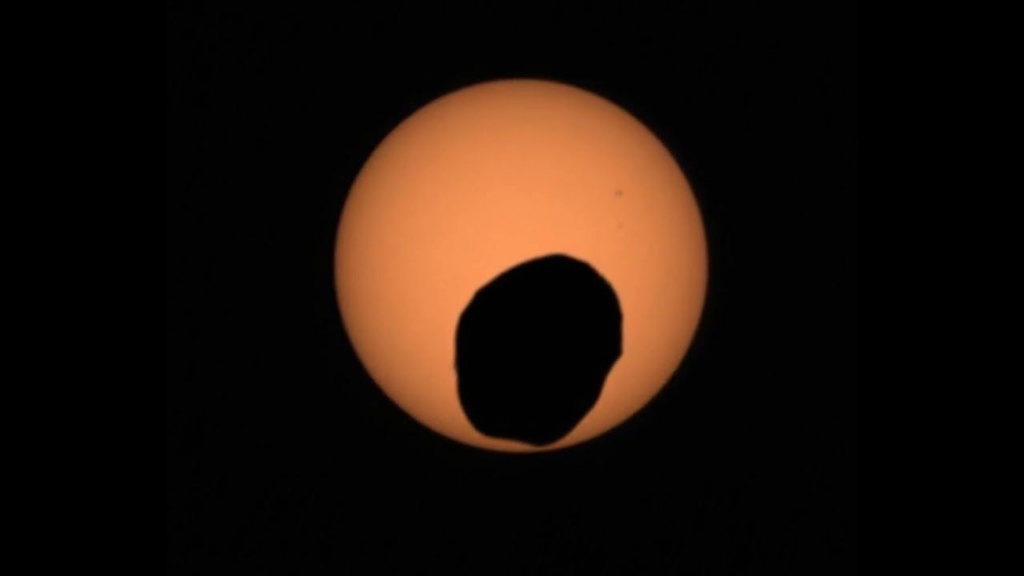
Solar Eclipse on Mars
In April 2022, NASA’s Perseverance Mars rover used its Mastcam-Z camera system to shoot video of Phobos, one of Mars’ two moons, eclipsing the Sun, as seen in one frame of the video, pictured here.
Thursday, August 3, 2023
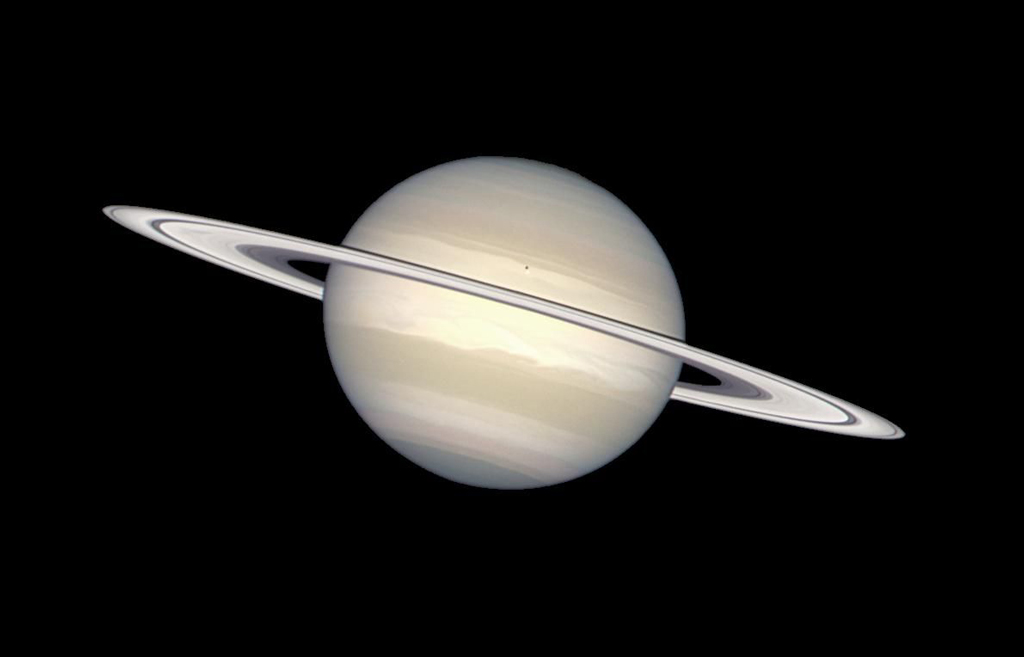
Saturn in Natural Colors
The NASA/ESA Hubble Space Telescope has provided images of Saturn in many colors, from black-and-white, to orange, to blue, green, and red. But in this picture, image processing specialists have worked to provide a crisp, extremely accurate view of Saturn, which highlights the planet's pastel colors. Bands of subtle color - yellows, browns, grays - distinguish differences in the clouds over Saturn, the second largest planet in the solar system.
The ring swirling around Saturn consists of chunks of ice and dust. Saturn itself is made of ammonia ice and methane gas. The little dark spot on Saturn is the shadow from Saturn's moon Enceladus.
Friday, August 4, 2023
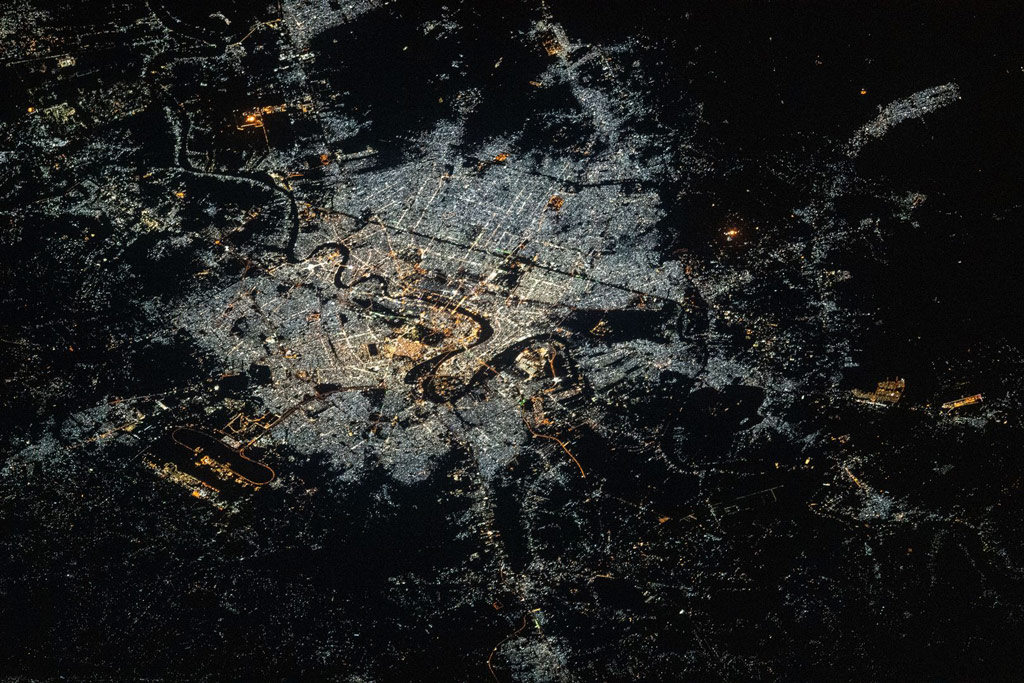
Baghdad from the International Space Station
United Arab Emirates astronaut Sultan Alneyadi captured this image of the city lights of Baghdad, Iraq, and the Tigris River on July 18, 2023, as the International Space Station orbited 261 miles above the Middle Eastern nation.
Since the station became operational in November 2000, crew members have produced hundreds of thousands of images of the land, oceans, and atmosphere of Earth, and even of the Moon through Crew Earth Observations. Their photographs of Earth record how the planet changes over time due to human activity and natural events.





